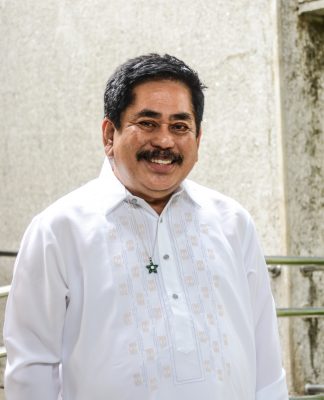CAN YOU imagine a gas experiment using a CD case instead of a petri dish?
Expect this unusual scenario among laboratories in the Philippines after the so-called “microscale approach” was introduced to Filipino scientists.
Cheaper and accessible equipment, less or zero pollution, and shorter time period for gathering experiment results —these are just some of the benefits that come in with the microscale approach.
The seminar titled “Workshop on Microscale Chemistry” last May 26 and 27, gathered UST faculty members and other representatives from Dominican Network (DomNet) schools.
“The workshop aims to strategize the teaching of chemistry at a lower cost and encourage teachers to adopt microscale experiments,” said Fortunato Sevilla III, pioneer of microscale chemistry in the Philippines and former assistant to the Rector for Research and Development.
Microscale chemistry, also known as small-scale chemistry, is a method used to conduct experiments by replacing large tools and chemical substances with smaller ones. Developed during the 1980s, the method was revived in UST last 2005 by the College of Science’s Department of Chemistry.
Large expenses, health hazards, and pollution in the environment prompted the Department of Chemistry to promote the microscale approach as a solution to these problems. The new method was taught and implemented not only among college students, but among high school students as well.
Since adopting the microscale approach, the college has used it in organic and inorganic experiments, and even biochemistry, where only a few microscale experiments have been developed.
Last April, College of Science professor Teresita Manansala presented her microscale experiment in the 25th Philippine Chemistry Congress. Performing an experiment on isolation and characterization, she made use of chicken brain instead of the usual calf brain for macroscale experiments.
Citing Manansala’s experiment as an example, Sevilla said some of its advantages include less reaction time, less waste generation, reduction on the amount of organic solvents used such as acetone, hexane, and hot ethanol, and practically the availability of a chicken’s brain compared to a calf’s brain.
“Chemistry is about the concepts, not the apparatus,” Sevilla said, noting that experiments on laboratories can be done even without traditionally used equipment.
The ‘alternative’ laboratory
The difficulties of gas experiments, according to Sevilla, can now be lessened because of this new method. Instead of allotting more than an hour for an experiment, alternative measures will make the experiments last for only about five minutes.
According to Sevilla, results gathered from both macroscale and microscale chemistry are the same because most of the experiments are conventional.
“Even if the method is quantitative compared to the macroscale approach, the procedures are adjusted to make sure that same results will be acquired,” he added.
Sevilla emphasized that chemistry does not end in memorizing the Periodic Table of Elements or visualizing chemical principles. Chemistry, according to him, should be applied through conducting experiments in an easier and accessible way.
More than classroom lectures, Sevilla explained the necessity of having laboratory courses which develop manipulative skills of students alongside non-technical skills.
Laboratory activities will no longer be about memorizing apparatus, but rather letting the students conduct the experiments using the tools they readily have.
“In some provincial public high schools, teachers reprimand students from using laboratory tools because breaking an apparatus would mean deduction from their [teachers’] salary. But now, the use of plastic materials would prevent using fragile tools and encourage teachers to use the laboratory more,” Sevilla said.















